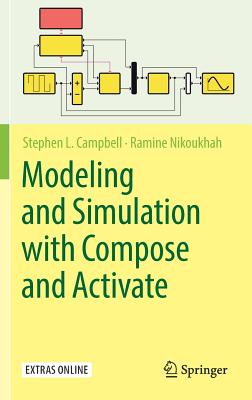Modeling and Simulation with Compose and Activate
暫譯: 使用 Compose 和 Activate 進行建模與模擬
Campbell, Stephen L., Nikoukhah, Ramine
- 出版商: Springer
- 出版日期: 2019-01-15
- 售價: $5,280
- 貴賓價: 9.5 折 $5,016
- 語言: 英文
- 頁數: 447
- 裝訂: Hardcover - also called cloth, retail trade, or trade
- ISBN: 3030048845
- ISBN-13: 9783030048846
-
相關分類:
工程數學 Engineering-mathematics
海外代購書籍(需單獨結帳)
相關主題
商品描述
商品描述(中文翻譯)
本書提供了使用 Altair Compose 和 Altair Activate 的教程,這些軟體包提供系統建模和模擬功能。先進的系統建模軟體提供多種創建模型的方法:模型可以用專門的語言編程、以方塊圖和狀態機的方式圖形化構建,或用基於方程的語言數學表達。本文將 Compose 和 Activate 分為兩個部分介紹。第一部分介紹了 Compose 的多語言環境及其在建模、模擬和優化中的應用。第二部分描述了使用 Activate 進行的圖形系統建模和優化,Activate 是一個開放系統環境,提供基於信號的建模以及基於物理系統組件的建模。在這兩個部分中,包含了來自機械、生物和電氣系統的應用範例,以及控制和信號處理系統的範例。本書將成為一個寶貴的補充,對於那些對 OML 感興趣的人以及從事工業規模建模、模擬和設計的人都有許多範例可供參考。所有範例均使用可用的免費基本版 Activate 和 Compose 進行操作。
作者簡介
Ramine Nikoukhah is Vice President for System Modeling and Simulation at Altair Engineering. He also teaches at the engineering school ESILV where he uses Activate in systems, control and mechatronics courses. Previously he had been director of research at INRIA, where he was a member of the team that developed Scilab and Scicos. He has received a PhD in Electrical Engineering and Computer Science from MIT.
作者簡介(中文翻譯)
史蒂芬·L·坎貝爾(Stephen L Campbell)是北卡羅來納州立大學的數學特聘教授,IEEE 會士,工業與應用數學學會(Society for Industrial and Applied Mathematics)會士,並在數值方法和控制方面發表了大量著作。他在西北大學獲得數學博士學位。
拉敏·尼庫哈(Ramine Nikoukhah)是 Altair Engineering 的系統建模與模擬副總裁。他同時在 ESILV 工程學院教授課程,並在系統、控制和機電一體化課程中使用 Activate。此前,他曾擔任法國國家計算機科學與自動化研究所(INRIA)的研究主任,並且是開發 Scilab 和 Scicos 團隊的成員。他在麻省理工學院(MIT)獲得電機工程與計算機科學博士學位。












